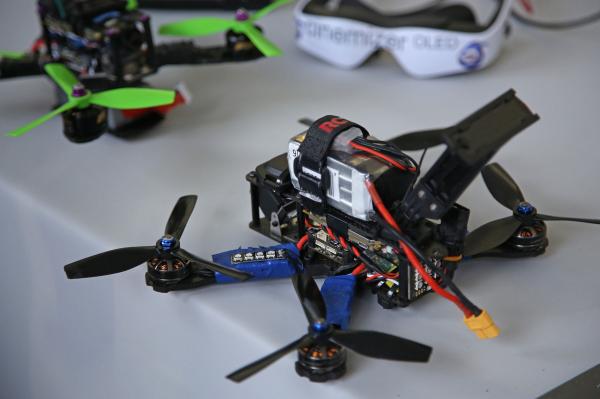
עם ספירת המלאי להגיע לקנה המידה עם כמה חברות גדולות אלה. retail operations have found RFID (זהות תדר רדיו) קריאה/סריקה היא משימה קשה עם הגדלת אובדן ההכנסה. אז, מחקר נעשה כדי לראות אם מזל"טים יכולים לעזור במרחב הזה.
חוקרי MIT פיתחו מערכת המאפשרת קטנים, בטוח, aerial drones to read Radio Frequency IDentification (RFID) tags from tens of meters away with a greater accuracy.
With Radio Frequency IDentification (RFID), tags were originally expected to revolutionize supply chain management due to their low cost, battery-free design. RFID תגיות received power wirelessly from RFID קוראים/scanners and then broadcast identifying numbers to allow warehouse managers to log inventory more efficiently.
“U.S. Army lost track of $5.8 billion dollars of supplies, between 2003 ו 2011, among its warehouses,” Fadel Adib, the Sony Corporation Career Development Assistant Professor of Media Arts and Sciences at MIT, said in a press release.
“The U.S. National Retail Federation reported in 2016 that shrinkage — loss of items in retail stores — averaged around $45.2 billion annually. By enabling drones to find and localize items and equipment, this research will provide a fundamental technological advancement for solving these problems.”
Small, safe aerial drones reading RFID תגיות from tens of meters away while identifying the tags’ locations with an average error of roughly 19 centimeters has been created/tested by researchers.
One thing to consider is safety. The problem of using very small drones with plastic rotors to prevent injury in case of a collision can be used to minimize safety, but the small drones are too small to carry an RFID reader with a range of more than a few centimeters, so this needs to be researched a bit more. Drones are becoming more and more useful in many applications, כולל RFID. Consider a lumberyard who needs to take inventory of the entire yard. כעת, an operator has to walk the yard to get RFID reads for the entire yard. These can be very large yards. With drones, you can fly it around the yard in a fraction of the time.
To get around the need to carry heavy readers on the drones, researchers found a method to use the drones to relay signals emitted by a standard RFID קורא, allowing for the more effective locating of tags.





